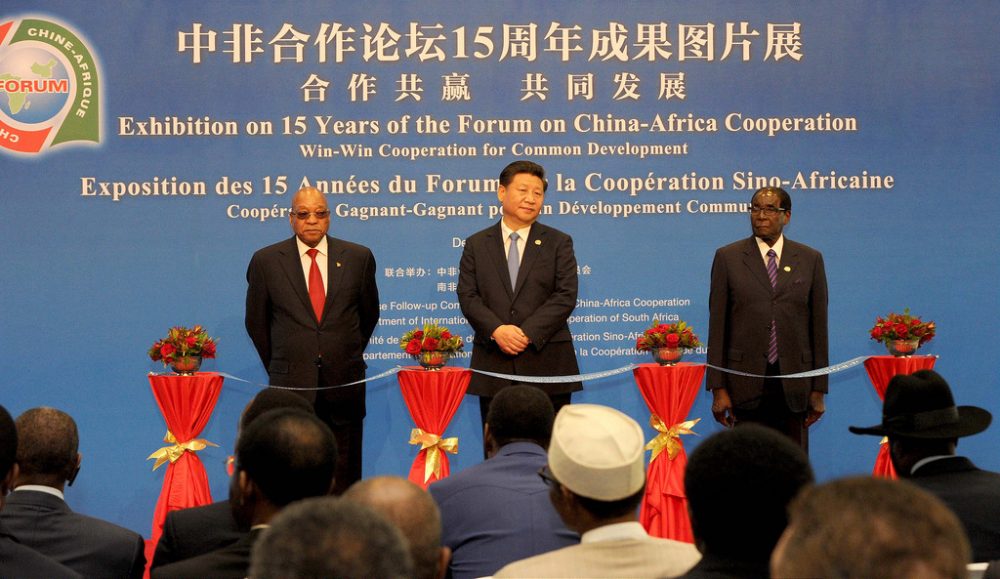Wei Liu and Heiner Janus
China’s development agency released a new draft of “Measures for the Administration of Foreign Aid” on 13 November, asking for comments from the public. The measures clarify and guide the practices of all Chinese institutions engaged in foreign aid. Although these are internal management guidelines for the Chinese bureaucracy, they have far reaching global consequences. According to latest estimates, China has steadily increased foreign aid over recent years and in 2016 was the seventh largest donor globally.
The reform of the Chinese aid system reached a peak in April 2018, when China established a new International Development Cooperation Agency (CIDCA) at the vice-ministry level, elevating the political importance of development cooperation. It has been unclear, however, how the agency adds value to the complex landscape of over 30 Chinese institutions dealing with development cooperation. In particular, it is uncertain whether CIDCA can assert itself vis-à-vis other powerful actors like the ministries of commerce or foreign affairs.
The new guidelines address this ambiguity and indicate that CIDCA will have far-reaching competencies beyond all other institutions, especially regarding strategic planning. It remains a risk that the agency ends up as another bureaucratic layer in a fragmented system, but we believe that the guidelines can critically improve China’s aid management and delivery. We identify three ways for the agency to upgrade Chinese aid from an international perspective.
Strengthen monitoring and evaluation of Chinese aid
First, CIDCA is now authorised to supervise Chinese development projects and to carry out comprehensive evaluations. While CIDCA still needs to coordinate with other institutions that remain responsible for implementation, the agency can set up a comprehensive monitoring and evaluation (M&E) system to enhance the efficiency and effectiveness of Chinese development cooperation.
China already has some M&E systems in place, but they are geared towards the project-level and information is not compiled across projects and institutions. Current evaluation criteria primarily focus on technical feasibility and economic returns. Typically, social and environmental effects and long-term impact assessments receive less attention. Hence, we suggest that CIDCA sets up a common results framework for all Chinese aid, integrates all dimensions of sustainable development in project assessments and introduces ex-post impact evaluations of aid projects.
Improve reporting statistics and collecting data on Chinese aid
Second, CIDCA could become a central reporting hub that tackles the current lack of information on Chinese aid. The guidelines mention one foreign aid statistical system for all Chinese institutions and give CIDCA the task to compile “annual budgets and final accounts for foreign aid projects.”
If CIDCA is able to collect and report this data, China will be able to address long-standing criticisms regarding a lack of transparency of its aid. The quality of reporting will depend on how detailed and frequently available the data will be. Although this is a challenging task, it is a positive step and we suggest that data is reported according to internationally comparable standards.
Increase international exchange via Chinese aid
Third, CIDCA has the mandate to engage internationally on behalf of the Chinese government. There is vast potential to improve China’s participation in international fora, particularly in the United Nations, the G20 or the Global Partnership for Effective Development Cooperation. For instance, China could report on its contribution to addressing global development challenges (including climate change), as well coordinate policies and exchange on best practices.
China has increased international engagement during a time when other development agencies are struggling with problems of renewed nationalism, protectionism and an erosion of rule-based multilateralism. This does not mean that the international community should uncritically embrace Chinese initiatives such as Belt and Road. Yet, rejecting China’s contribution to global development is no option either, especially given China’s track-record of economic success and lifting hundreds of millions people out of poverty.
Instead, more effort should go into understanding the nuances of China’s development experiences and its foreign aid through reciprocal learning formats. CIDCA should work with the many Chinese and international research institutions in conducting joint research to identify common interests and expand the knowledge base on development cooperation.
Overall, China’s aid system will keep many of its unique characteristics, but CIDCA offers an opportunity to strengthen coordination and strategic planning. This could lead to tangible improvements in Chinese aid projects, directly benefitting developing countries and other international partners.
Heiner Janus is a Researcher with the research programme Inter- and transnational cooperation at DIE and a PhD candidate at the Global Development Institute

